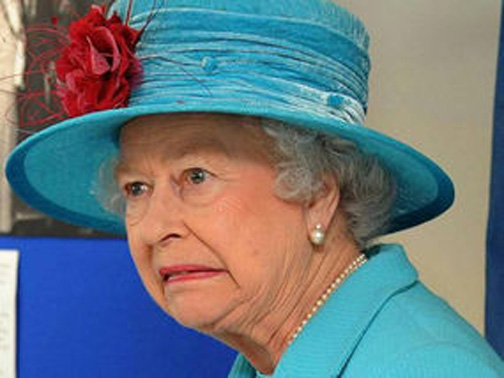What’s that you
say? You want to know what I’ve been doing at the V&A? Oh, well, right
then. I suppose that’s only fair.
Episode 5: Her
Maj and Archiving, wherein our heroine goes through 44 boxes of paper
Now as many of
you know I am in England earning a master’s degree in Museum and Artefact Studies.
So it may surprise you that on my placement with the Theatre and Performance
department of the V&A I’ve not worked with any objects. Instead I’ve been
working with the archives. Now you may think, well what’s the real difference?
Plenty.
Museum staff
tends to catalogue every object in great detail (well that’s the desired goal
in any case). Archivists on the other hand work to a hierarchy not unlike your
typical monarchical society. Let’s take, hmmmmm, monarchies, monarchies….oh how
about England? At the top is her Maj, Queen Liz II. She’s the top of the
hierarchy and in archivist speak would be the fonds level. That’s the level
where you would describe a particular collection you were cataloguing. I was
working with three different collections but the main one was the Michael
Benthall Archive. Michael Benthall was a director and producer in London during
the forties through the sixties. He was famous for putting on the first folio of
Shakespeare’s plays at the Old Vic and for working with stars like Katharine
Hepburn and Vivien Leigh. So at H.M. Queen Liz’s level, or the fonds level, I
described what the entire collection contains in general terms and how many
boxes of material therein.
| Queen Elizabeth = Fonds |
Next in line to
the throne is Prince Charlie. His equivalent in archival terms is the series
level. A series is a broad heading of different categories of material. So for
Michael Benthall I had nine series: administrative documents, production files,
touring files, scripts, musical scores, sound recordings, scrapbooks, photographs,
and programmes.
| Prince of Wales = Series |
Next would be
Prince William or the file level. Files are an even more specific
heading of material and tend to be the lowest level archivists will go to.
There must be over a hundred different files in the Michael Benthall
collection. An example would be something like the Production file for As You Like It by William Shakespeare,
1950. In it would be documents relevant to that particular production.
| Duke of Cambridge = File |
If you really
wanted to go crazy you could go down to the Prince George level or the item
level. That would be something like a cast list, costume design, or a specific
photograph. Thank goodness I didn’t need to catalogue to this level for Michael
Benthall because there were 45 boxes of documents and photographs. I think I
would have been there until next Easter sifting through each item. To be fair,
I did have to go through each item in order to figure out how I wanted to
organise the collection and to see if anything needed to be closed under the
Data Protection Act. I’ll tell you two of the coolest things I came across. The
first was Katharine Hepburn’s signature. Michael Benthall had worked with her
many times and there it was, at the bottom of a note. The other cool thing I
found was a cast list for a touring production which starred Vivien Leigh. Now
that’s cool enough on its own but as I scanned through, at the very bottom
where the minuscule parts were listed was Patrick Stewart. It must have been
one of his first real gigs and it was so amazing to see his name there.
| Prince George of Cambridge = Item |
So most of what
I did probably sounds a bit mundane and to be honest, it was. As they would say
here, that’s work though, innit? I did get to shadow one of the assistant
curators for a day down at the museum in South Kensington. That day they moved
an enormous painting into the Theatre and Performance Gallery. It was quite fun
and dramatic to watch the V&A team carry it up the stairs and through into
the gallery. I also got to see a live puppet show performance as part of the
festivities surrounding Shakespeare’s birthday and go on a tour of the gallery
with another assistant curator. Mostly though, I was sifting through paper and
cataloguing. My work should be going up on the V&A’s archival search engine
though which is terribly exciting really.
So that’s it.
That’s what it’s like to work in archives. Any questions?

No comments:
Post a Comment